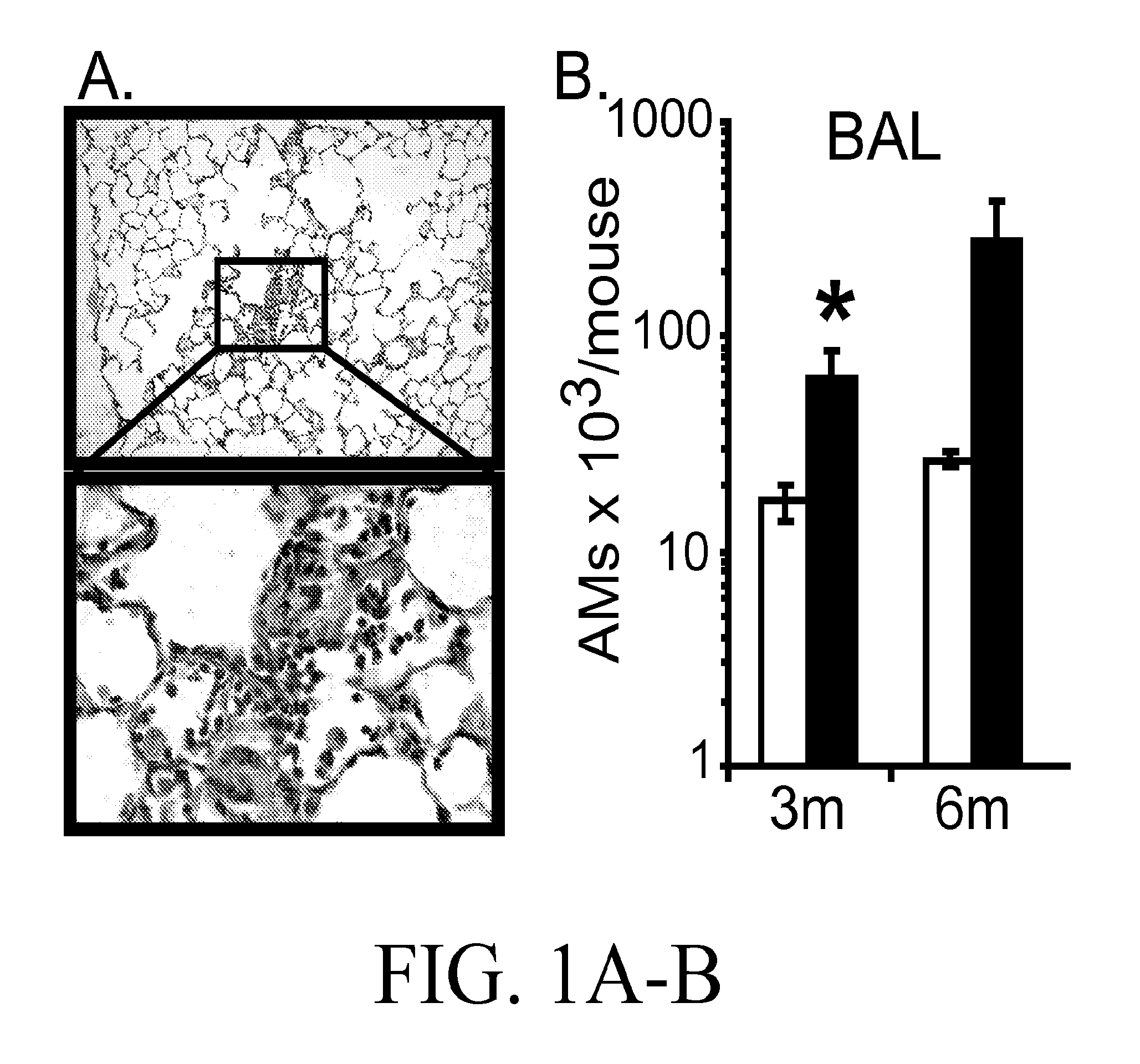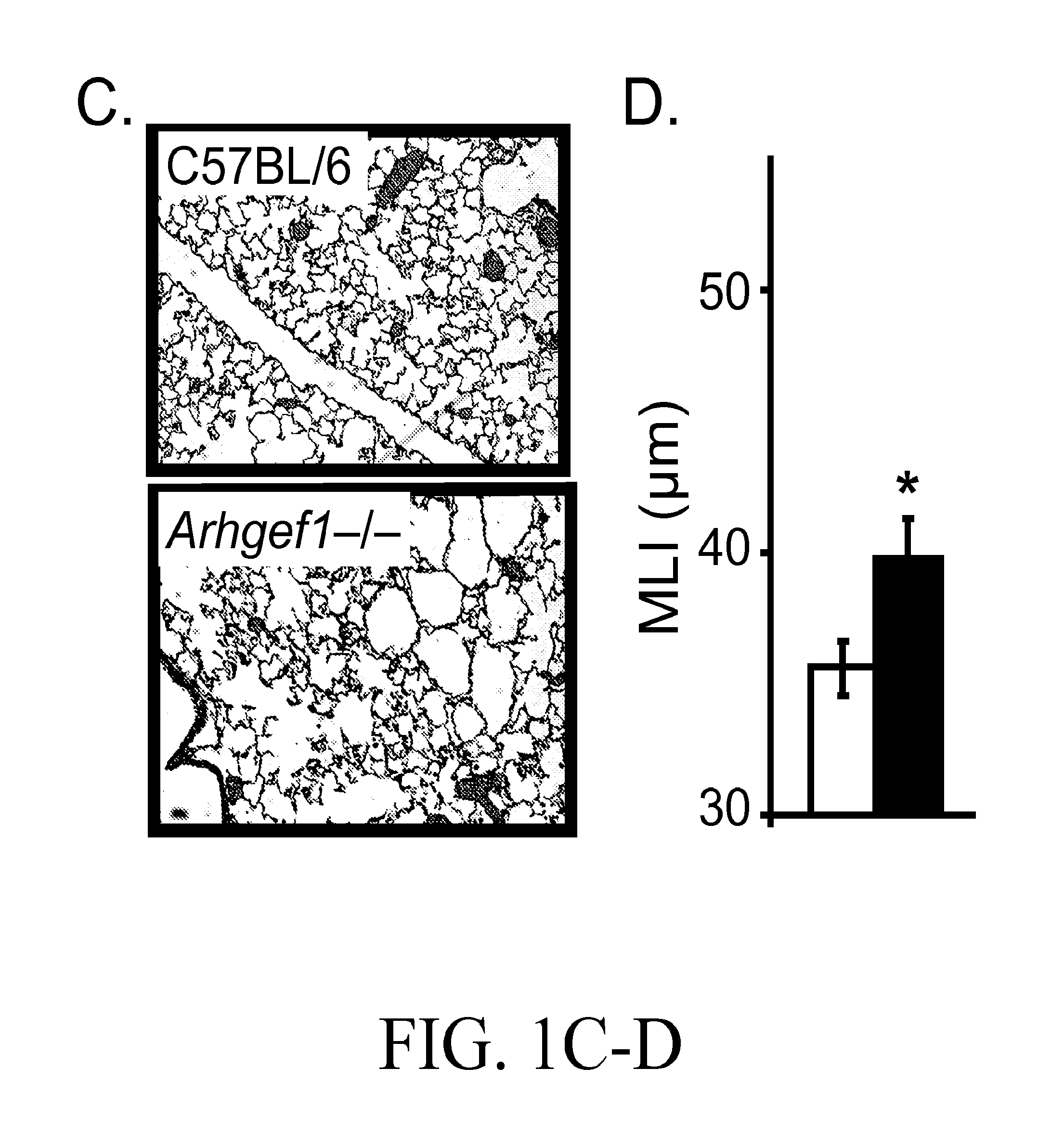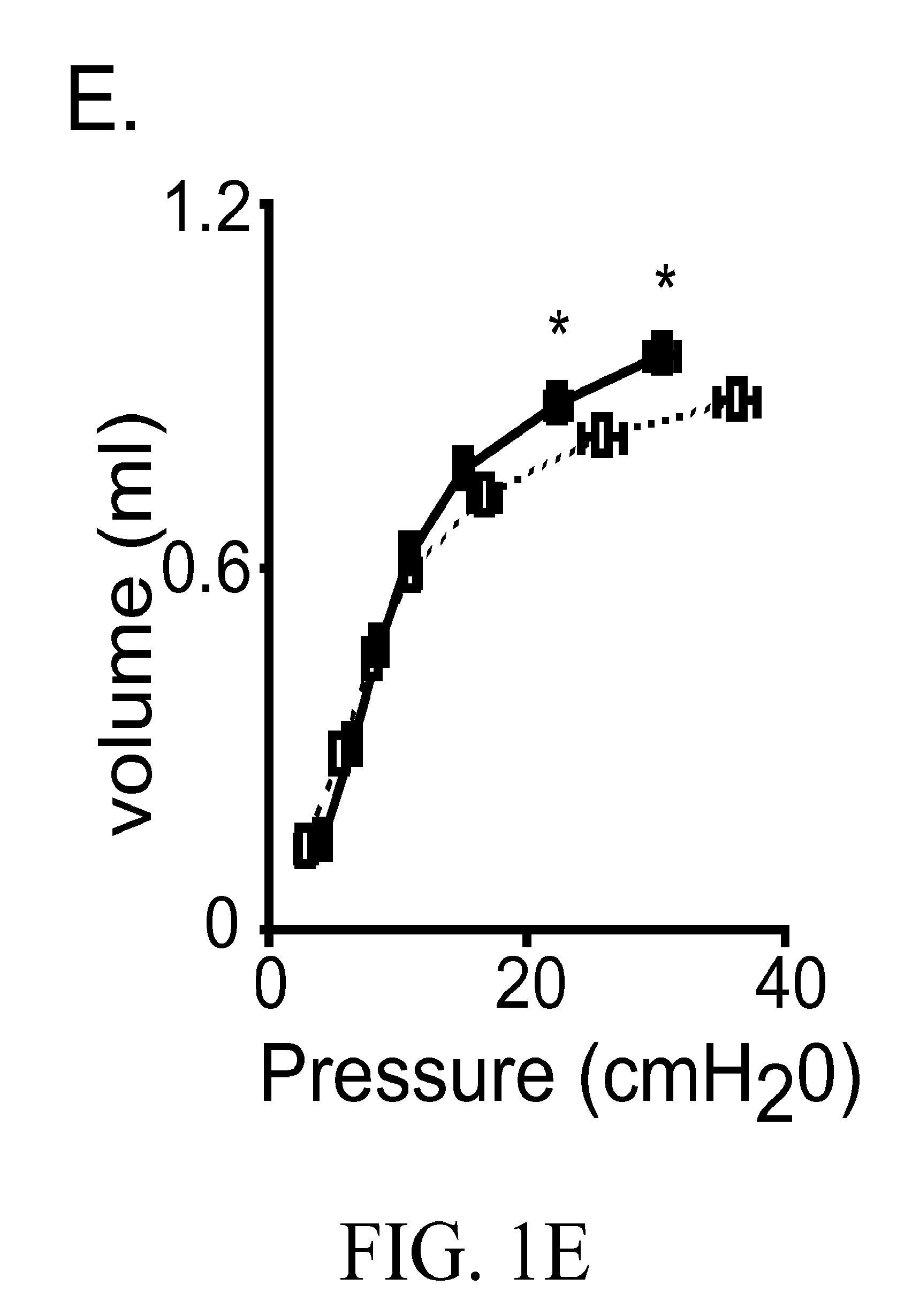Pulmonary disease treatment and diagnosis based on arhgef1
a pulmonary disease and arhgef1 technology, applied in the field of pulmonary disease treatment and diagnosis, can solve the problems of tissue injury that must be repaired, local tissue injury, tissue injury, etc., and achieve the effect of reducing myeloid mmp9 production and exaggerating matrix metalloproteinase (mmp) 9 production
- Summary
- Abstract
- Description
- Claims
- Application Information
AI Technical Summary
Benefits of technology
Problems solved by technology
Method used
Image
Examples
example 1
[0049]This Example determines the macrophage signaling pathway regulated by Arhgef1 that leads to MMP production and whether protease production inversely correlates with Arhgef1 expression.
[0050]Expression of Arhgef1 by pulmonary leukocytes is required for appropriate lung immune homeostasis and the present inventors have shown that Arhgef1 pulmonary leukocytes express significantly more MMP2, pro-MMP2, and MMP9 activity in bronchoalveolar lavage (BAL) compared to C57BL / 6 controls (FIG. 2). Naïve (unchallenged) Arhgef1− / − mice also harbor more AMs (FIG. 1B) and both human and murine macrophages are known to produce MMPs, including MMP9, when cultured on integrin ligands. As both MMP9 and integrin ligand expression have been shown to be increased in COPD tissues and airspace, it is believed that Arhgef1 regulates macrophage integrin-mediated MMP9 production.
[0051]Wild type and Arhgef1− / − peritoneal macrophages (that express minimal and equivalent amounts of MMP9 ex vivo, FIG. 2A) we...
example 2
[0065]This Example establish whether integrin-mediated MMP production is exacerbated by oxidative stress, cigarette smoke or microbial infection, environmental stimuli relevant to emphysema.
[0066]Pulmonary oxidative stress is associated with COPD. The arachidonic acid metabolite, 8-iso-Prostaglandin F2α (8-iso-PGF2α isoprostane), is a common indicator of this oxidative environment and is elevated in the lungs of emphysematous individuals and produced by macrophages. Interestingly, 8-iso-PGF2α is also an alternate ligand for the thromboxane receptor but, in contrast to thromboxane, is generated from arachidonic acid by catalysis by reactive oxygen species and independent of cyclooxygenases. Thus, considering that macrophages produce reactive oxygen species during an inflammatory response and that smoking exacerbates an oxidative lung environment, an experiment is conducted to determine whether 8-iso-PGF2α contributed to TP signaling of MMP9 production. To determine if cyclooxygenase ...
example 3
[0067]This Example establishes whether integrin-mediated MMP production is exacerbated by oxidative stress, cigarette smoke or microbial infection, environmental stimuli relevant to emphysema.
[0068]It is believed that environmental stimuli that promote emphysema act similarly to promote integrin-mediated TP-induced MMP9 production by pulmonary macrophages. Experiments are performed to determine if 8-iso-PGF2α isoprostane contributes to TP signaling of MMP9 production by macrophages. Experiments are also performed to determine whether primary human airway epithelial cells express integrin ligands that promote alveolar macrophage MMP9 production and to determine whether common microbial inflammatory stimuli induce MMP9 production via the TP signaling pathway. In addition, experiments are performed to determine whether cigarette smoke enhances MMP9 production in vivo and in vitro via the integrin-TP signaling pathway.
[0069]Experiments are performed to determine whether environmental st...
PUM
| Property | Measurement | Unit |
|---|---|---|
| concentration | aaaaa | aaaaa |
| adhesion | aaaaa | aaaaa |
| areas | aaaaa | aaaaa |
Abstract
Description
Claims
Application Information
 Login to View More
Login to View More - R&D
- Intellectual Property
- Life Sciences
- Materials
- Tech Scout
- Unparalleled Data Quality
- Higher Quality Content
- 60% Fewer Hallucinations
Browse by: Latest US Patents, China's latest patents, Technical Efficacy Thesaurus, Application Domain, Technology Topic, Popular Technical Reports.
© 2025 PatSnap. All rights reserved.Legal|Privacy policy|Modern Slavery Act Transparency Statement|Sitemap|About US| Contact US: help@patsnap.com



